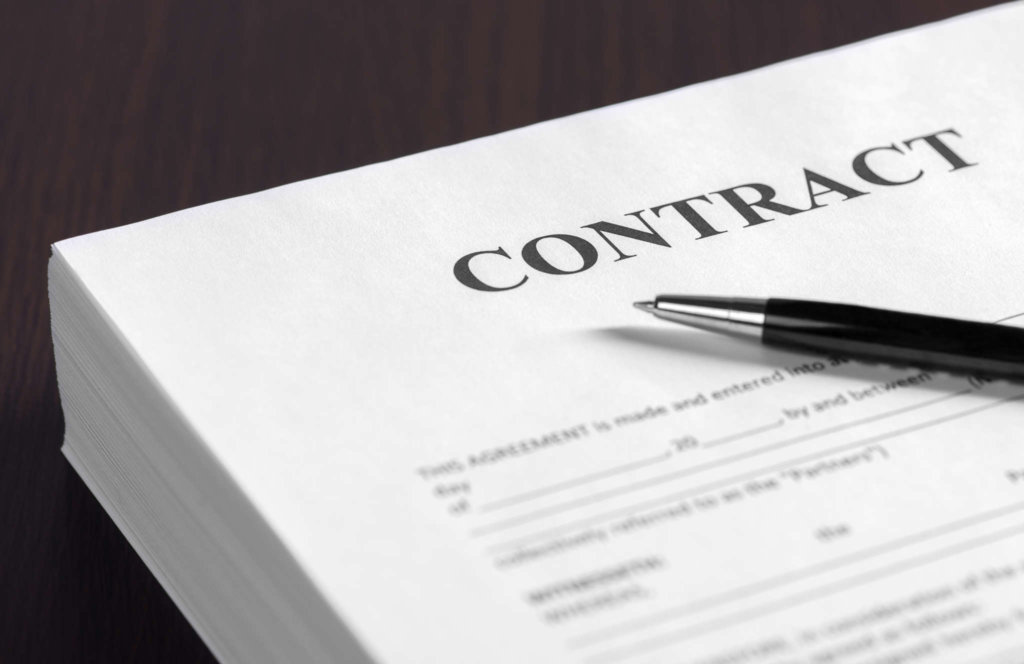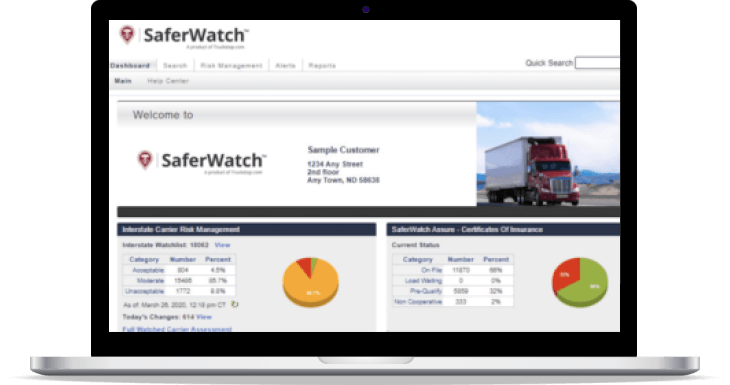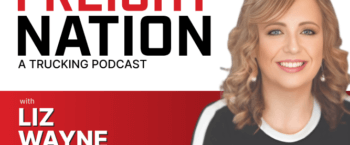A Freight Broker’s Guide to Carrier Insurance Monitoring

As a freight broker, you are the go-between for shippers and carriers. You might already know that it’s important to require proof of insurance during the carrier selection process. But did you know that even if you have a carrier’s certificate of insurance on file, you might be still be held legally responsible if something goes wrong and you failed to ensure that the carrier’s insurance was up to date? A strong carrier insurance monitoring program is critical for freight brokers.
Simplify carrier onboarding
Onboard compliant carriers right from your TMS.
Unfortunately, many brokers are still manually monitoring carrier compliance. This process becomes more time-consuming and error-prone as you add new carriers to your network. Over time, the risk of missing something becomes unacceptably high. Even when your list is short, manual compliance monitoring is tedious at best and could be a costly mistake.
Fortunately, Truckstop offers SaferWatch Carrier Monitoring, a full-service, automated, real-time compliance monitoring solution that allows you to access each carrier’s current insurance certificate quickly.
What is carrier insurance monitoring?
Carrier insurance is not the same as freight broker insurance. As a broker, you need your own insurance, such as general liability and workers’ compensation. Carrier insurance is insurance for trucking companies. Pay particular attention to cargo insurance coverage, which specifically covers the contents of the loads instead of the trailer itself. Each shipper sets its own requirements for how much cargo coverage the carrier must hold. You can pick up contingent cargo liability insurance on your own to cover any potential gaps in the carrier’s coverage, but yours is not a substitute for theirs.

By federal regulation, you must create a detailed written contract with each carrier you use, and maintain a copy of that contract for three years after the last time you provide an estimate on behalf of that carrier. You must also provide each shipper with a detailed list of the carriers you use. Beyond that, you’re required to keep accurate records of every individual transaction for a period of three years, and allow any party to that transaction to review the records on request. If anything goes wrong during a shipment, you will need to show proof (potentially in court) that you have a copy of the carrier’s current insurance certificate.
As you can see, all this record keeping adds up. Carrier insurance is just one small but essential part of keeping accurate records.
Challenges of manual carrier insurance monitoring
Manual carrier insurance monitoring is challenging overall. But what are the specific challenges you can expect? Here are a few of the most common issues that freight brokers face when maintaining a manual system. Manual insurance monitoring is:
Tedious and time-consuming
Carrier insurance monitoring means checking every carrier’s insurance status for changes before every single load you assign to that carrier. It doesn’t matter if you used that carrier just last week. How do you know that the carrier hasn’t made changes or dropped the policy since then? This can be a tedious process, and it can take a great deal of time.
Inaccurate and unreliable
It can be hard to confirm your carrier’s most up-to-date status in time for a job to start, especially if you’re in a hurry. You might end up relying on the certificate of insurance that you have on file, especially for carriers you’ve worked with for a while. In these cases, your information might be outdated, inaccurate, and unreliable.
Impossible to scale
It’s one thing to manually monitor carrier insurance for a single transaction or even a handful of transactions in a month. But presumably, your goal is to scale up your freight brokerage, completing more and more transactions between ever-growing carrier and shipper networks. Eventually, there won’t be enough hours in the day if you’re growing the way you want.
Fraught with risk
Because manual monitoring is prone to inaccuracy and unreliability, it carries more risk. It only takes a single mistake to use a carrier that doesn’t meet your compliance requirements. Is it worth taking that chance?
How brokers benefit from automated carrier insurance monitoring
Automated carrier insurance monitoring is one of the best ways to minimize the risks and frustrations of manual monitoring. It also offers a strong set of benefits for freight brokers. Here are some of the top reasons to switch from manual to automated carrier insurance monitoring.
Identify qualified carriers faster.
The advantages begin at the very first step: identify and onboard qualified carriers. With the Truckstop carrier onboarding tools, you can do your due diligence in a fraction of the time, letting you quickly add new carriers to your roster. This not only helps you build your carrier network faster but also frees up time to focus on other aspects of your business.
Improve data accuracy and reliability.
With ongoing access to tools like our extensive, comprehensive database, you can pull unlimited certificates of insurance. You’ll also be able to see safety ratings and records, carrier reviews, and more. This suite of tools can dramatically improve the reliability and accuracy of your carrier data.
Get real-time carrier status updates.
Want real-time updates when a carrier’s status changes? It’s as easy as setting up notifications in the Truckstop carrier monitoring tools. You won’t need to worry that you might have missed something, and you’ll know in an instant if any red flags are raised with one of your carriers.
Reduce identity theft and fraud.
Automated carrier monitoring can also help reduce instances of identity theft and fraud. With access to the Transportation Intermediaries Association (TIA) Watchdog Reports, you’ll be able to read verified, trustworthy accounts of any reported incidents.
Retrieve carrier insurance certificates faster.
Our tools let you instantly access our extensive database of up-to-date carrier insurance certificates. If a certificate isn’t in our database, we can often retrieve it in as few as 15 minutes.
Reduce compliance risks.
With the Truckstop Compliance-as-a-Service tools, you can help reduce your risks. Not only do you get access to our extensive carrier database, but you’ll work with our team of dedicated compliance experts. This will help mitigate risk while reassuring shippers that you have a compliance program in place to keep their cargo safer.
Automate carrier insurance monitoring with Truckstop.

So now you understand why carrier insurance monitoring is vital for freight brokers. You know the risks and challenges of trying to maintain a manual monitoring system, especially at scale. And you know how much time manual monitoring can take.
Now is the perfect time to automate your carrier insurance monitoring with Truckstop. You can use the platform through all process steps, from finding qualified carriers to monitoring their insurance and safety ratings. And with real-time alerts, you never have to worry that you might miss unexpected and sudden changes. Not only does this reduce your compliance risks and risk management work, but it also gives you more time to focus on higher-value business activities such as growing your company.

Find out how our platform gives you the visibility you need to get more done.
Get helpful content delivered to your inbox.
Schedule a demo.
Find out how our platform gives you the visibility you need to get more done.





